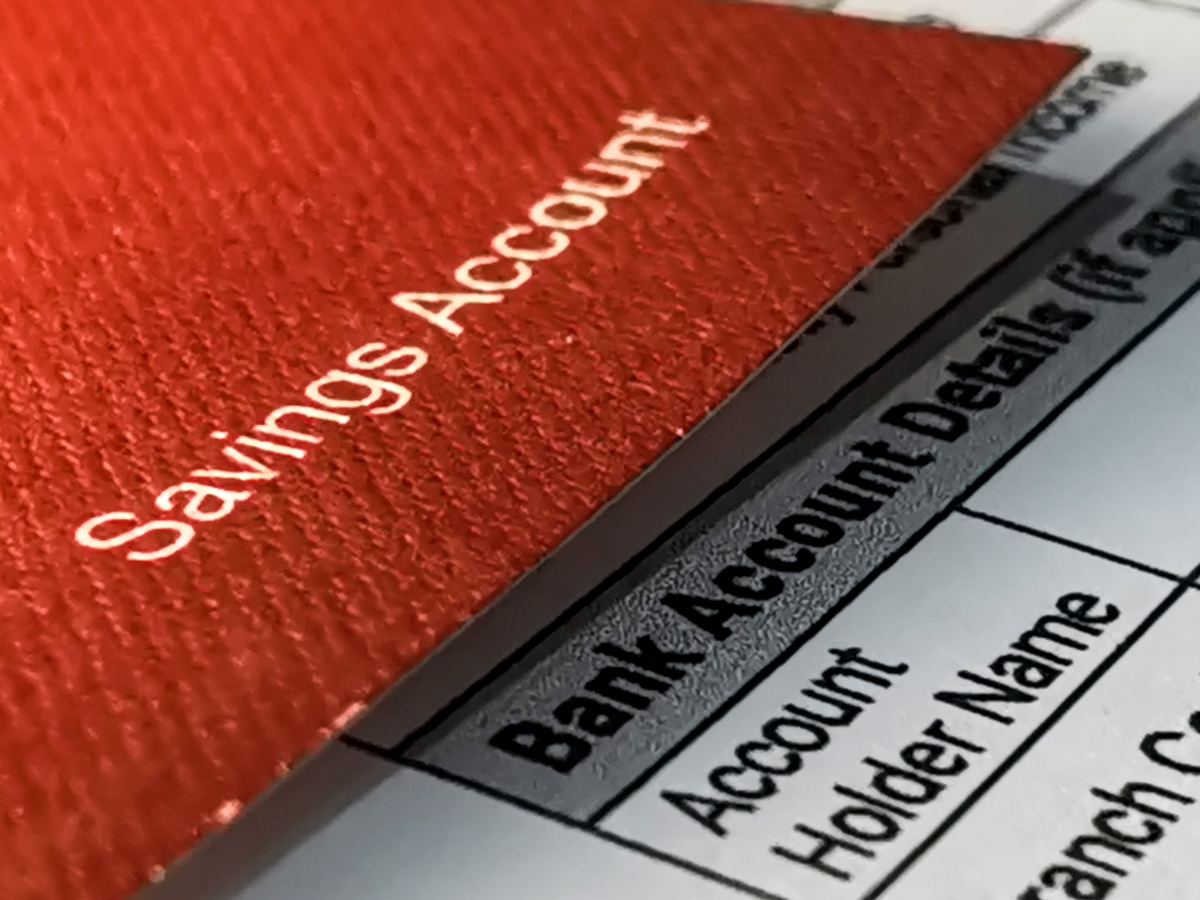
If you have accumulated more money in your business checking account than you need for daily operating expenses, congratulations! That is an excellent “problem” to have! It could be time to consider putting that money to work for you. A business savings account can help small business owners plan for the future and ensure financial security. It can provide a protected place to set aside funds, allowing you to save for a rainy day, prepare for less prosperous seasons, invest in new equipment, or take advantage of opportunities that may arise.
A business savings account can also provide you peace of mind, knowing that money is available when needed. In addition, access to higher interest rates and the ability to transfer funds quickly is a great way to help ensure greater financial security for the business.
Every banking institution is different when it comes to the features and benefits of its business savings offerings. We’ve assembled a list of common questions you may want to consider asking your banker before opening a savings account:
- Is your checking account interest-bearing, and if so, how does the interest rate compare to that of a business savings account?
- Is there an initial minimum deposit to open the savings account?
- What are the monthly fees for each type of account?
- What minimum balances are required in both checking and savings accounts so that fees are waived? And, would it be worth it to keep minimum balances?
- Are there withdrawal limits?
- What are the other benefits of having a business savings account with your institution?
- Is my money FDIC-insured, and if so, what is the cap?
Often, a bank will tie the checking and savings accounts together, and there will be a combined minimum balance that is lower than if either account was separate. For that reason, having your checking and savings accounts in the same bank might be more effective. Other common benefits include waiving overdraft fees, wire transfer fees, and NSF charges.
There are other types of interest-bearing accounts besides savings accounts, including money market accounts and certificates of deposits (CDs).
A money market account is a type of savings account that allows you to earn a higher rate of interest than a traditional savings account while also providing you with access to your funds. It may have check-writing privileges, but the withdrawals may be limited. Certificates of deposits, or CDs, typically pay higher interest rates than traditional savings accounts. Still, they tie up your money for a specified period, and steep early-withdrawal penalties exist.
Many institutions besides your primary bank are focused on savings accounts and will pay much higher interest rates. For example, online banks and credit unions typically pay a higher interest rate than a brick-and-mortar bank; however, the money may not be FDIC-insured, so be sure to read the fine print.
An additional benefit of keeping money in a separate savings account is that you can save for many things:
- A cushion for emergencies.
- Lump sum tax payments.
- Future capital expenditures.
Once you’ve set up your new savings account, consider scheduling recurring transfers to it so that you build up your savings balance.
A business savings account is a great way to ensure your business is prepared for unexpected costs, expenses, or growth opportunities. With a business savings account, you can put your unused funds to work, earning you higher interest than a checking account could. By incorporating a savings account that works for your business’s needs, you can feel more secure about the financial future of your business.

As business owners, we’d like to think that we make rational, logical decisions regarding our business finances. However, scientists have discovered hardwired biases in our minds and thought processes, one of which is the sunk cost bias, also known as sunk cost fallacy.
A sunk cost is simply money, time, or resources you have already spent and can’t recuperate. Another word for them is retrospective costs. The bias comes into the picture when we consider those costs in future decisions.
The sunk cost fallacy, first hypothesized by Richard Thaler in 1980, is a cognitive bias where people overestimate the importance of sunk costs in their decision-making. He wrote, “Paying for the right to use a good or service will increase the rate at which the good will be utilized.”
In a 1985 paper by Hal Richard Arkes and Catherine Blumer titled “The Psychology of Sunk Cost,” the authors found evidence that this tendency is “predicated on the desire not to appear wasteful.” Furthermore, “those who had incurred a sunk cost inflated their estimate of how likely a project was to succeed compared to the estimates of the same project by those who had not incurred a sunk cost.”
Essentially, instead of making a decision that’s right for themselves and their future based on current circumstances, people will make a decision heavily informed by the action already taken, even when it isn’t relevant to current circumstances. It doesn’t sound very productive, does it?
Let’s discuss two examples of the bias in action. First, let’s say you have spent a lot on car repairs. You continue to repair the car, digging a deeper and deeper hole. Making a $3,000 downpayment toward purchasing another vehicle is likely a better decision than sinking the same amount of money into another round of repairs. However, you are still emotionally (and irrationally) attached to all the money you spent on the clunker.
Now say you have an employee that is a borderline performer. You keep investing in them, thinking you can “fix” them. However, they don’t improve. Regardless of whether the employee is insubordinate or simply not the right fit for the role, letting them go was likely the right move to make some time ago.
So, now that you know about the sunk cost bias, how can you avoid falling into it in your business? Here are some ideas:
- Increase your mindfulness when making decisions that involve costs already incurred. Ask yourself, “what decision would I be making if I hadn’t already invested the time/money/resources into this project?”
- Since the bias can often come as the result of not wanting to experience negative emotions like feelings of failure, irresponsibility, or loss, try to remove your emotions from the equation altogether. Instead, examine the business project at hand from a facts-only perspective. Ask yourself, “What does the data show me?” Then do the math.
- Track key performance indicators (KPIs) regularly to see whether you’re on or off track and assess whether it’s worth continuing the project sooner.
- Like setting a budget for holiday shopping, establish goals and milestones for future projects, and have a “walk away” plan if things spiral out of control.
- Stay future-focused.
Ultimately, it will be up to you to ensure that sunk cost bias doesn’t affect your decision-making in the future. Hopefully, this information and the five tips we provided will help you orient yourself to make business decisions that benefit current and future you, rather than past you.
If you’d like to learn more about cognitive bias, including the sunk cost bias, check out the works of two additional scientists, Daniel Kahnerman and Amos Tversky (the former of whom won the Nobel prize for his work!).

Living the dream with the dream team! New Business Directions, LLC had an amazing opportunity to escape the cold New Hampshire winter for a few days in Puerto Rico. This was a great chance for the team to relax, refresh, and come together to create a better work experience.
The team was able to take full advantage of the beautiful Puerto Rican sunshine and catch a break from the everyday hustle and bustle of the office to get intentional with its efforts for the year ahead. While they were there, they were able to plan for the future, strengthen their team dynamic, and come up with creative solutions to improve processes and take advantage of individual strengths. This was an experience that the team will never forget, and they are already looking forward to doing it all again next year!

Are you looking for new ideas to market your business? Knowledge panels might be an excellent tactic to consider. If you haven’t heard of them, don’t worry; many people haven’t, but they are a Google invention widely used in search results daily.
Knowledge panels are the information panels that appear on the bottom right corner of your search results when you look up specific people or brands. They differ from the business profiles you see when you query a company, which Google Business Profile provides.
Knowledge panels display information that Google has collected in its Knowledge Graph, which is one of Google’s information databases. For example, search for a favorite author or your current Congressperson, and you can see an example of a knowledge panel. Famous historical figures and extremely popular entertainers may have a more robust page displaying all of the information about them, but there will typically also be a column of text to the right (you may have to scroll a bit to see it), which is the knowledge panel.
So, how can you use knowledge panels in your business? A knowledge panel representing your leadership or brand brings instant credibility and visibility to your organization. It boosts reputation and helps to build trust with all stakeholders.
Who typically has a knowledge panel? If you happen to be an author of a book with a formal ISBN (International Standard Book Number), you would automatically get one. If you are a leader of certain organizations, like Bob Iger of the Walt Disney Company, you will also get one. If your brand is well-known, it will have a knowledge panel.
You can’t create a knowledge panel, but you can claim it once it appears. Google determines who receives a knowledge panel. But you can “lobby” for one, and there are marketers you can hire to help you execute the steps it takes to get one. The main thing is to be active and visible online.
If you already have a knowledge panel, there are procedures documented on Google Help that you can follow to claim it. You can also make edit suggestions and submit them to Google. You can’t directly edit your knowledge panel, however; Google has final control over what is displayed.
After reading this article, we hope you now have a good jumping-off point to understanding and obtaining a Knowledge Panel. With so many marketing tactics available online to help promote your business, it’s essential to stay in the know about them!
 A balance sheet is a financial statement showing a company’s assets, liabilities, and equity at a specific point in time. It’s one of the foundational financial reports for your business. But did you know the equity section of the balance sheet looks different depending on a business’s legal structure? The most common entity types are corporations, partnerships, and sole proprietors. Recently, we discussed what equity looks like on a corporate balance sheet. This time, we’ll review what the equity section of the balance sheet looks like for sole proprietors.
A balance sheet is a financial statement showing a company’s assets, liabilities, and equity at a specific point in time. It’s one of the foundational financial reports for your business. But did you know the equity section of the balance sheet looks different depending on a business’s legal structure? The most common entity types are corporations, partnerships, and sole proprietors. Recently, we discussed what equity looks like on a corporate balance sheet. This time, we’ll review what the equity section of the balance sheet looks like for sole proprietors.
The Equity Section
The equation Assets = Liabilities + Equity is true for all entities. For a sole proprietor, equity is called Owner’s Equity. There are typically two accounts listed: the Owner’s Capital Account and Owner’s Draw Account. We define both below.
Owner’s Capital Account. This balance represents how much money the owner has put into the business. Also included are cumulative business income or loss amounts from prior years.
Owner’s Draw Account. This balance represents how much money the owner has taken out of the business. Since a sole proprietor does not get a paycheck, taking money out of the business via a draw is how they receive their money.
A third account will show up if you run a balance sheet report in your accounting system on any date during the year: Current Year Earnings. This balance is the same as the net income on the year-to-date income statement. It represents the profit of the business.
On a formal balance sheet for external purposes, only one account will show: the Owner’s Capital Account. This is because the draw and the current year’s earnings will roll into that account.
Salary vs. Draw
It’s important to distinguish between the concepts of a salary and a draw. In corporations, owners receive salaries in the form of paychecks, where payroll taxes are deducted, and W-2s are issued at year-end. In the corporation’s income statement, the salary and taxes are deducted as expenses.
For a sole proprietor, this is not at all how it works. A sole proprietor has no salary. Therefore, there is no payroll expense or payroll taxes on the income statement for the owner. The owner could have employees, and those payroll expenses would be shown on the income statement, but there is nothing for the owner.
Instead, the owner takes draws, which are not an expense; they’re simply a reduction in equity. They do not affect profits or change taxes owed. An owner can take a great deal of money out of the business, and there is no impact on profits. There is undoubtedly an impact on cash flow, however!
A sole proprietor does pay payroll taxes in the form of self-employment taxes. They simply do it on their IRS Form 1040 as opposed to payroll tax forms that a corporation would use.
The equity section can be the most challenging to understand on the balance sheet. Hopefully, the explanation above will provide more clarity so you can better understand how to read your business’s financial statements.
 New Business Direction LLC
New Business Direction LLC
